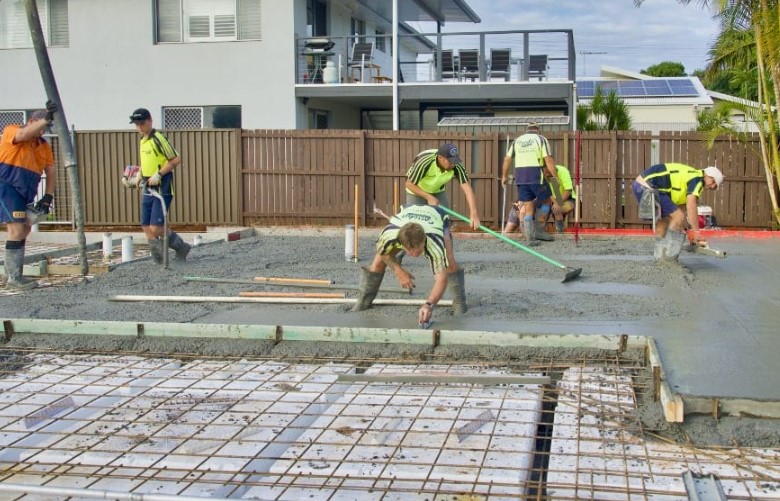
A Firm Footing: Exploring the Diverse Types of House Foundations
Introduction: The Bedrock of a Home
Every house, from the humblest cottage to the grandest mansion, has something in common: a foundation. This unheralded hero of home building literally supports everything else, acting as the bedrock upon which our living spaces are built. But not all foundations are created equal – they come in a variety of types, each with its own strengths and weaknesses. This article will delve into the intricate world of house foundations, so strap in, and let’s lay some groundwork!
1. Types of House Foundations
When it comes to the types of house foundations, there’s a lot more than what meets the eye. Depending on the soil conditions, climate, and the building’s design, the choice of foundation may vary. Let’s dive into the three main categories of house foundations: slab, crawl space, and basement foundations.
1.1 Slab Foundations
Slab foundations, as the name suggests, involve pouring a thick slab of concrete directly onto a flat, levelled site.
Pros: It’s the least expensive type of foundation, quick to install, and requires little maintenance. Plus, it’s a boon in termite-prone areas since these critters can’t tunnel through solid concrete.
Cons: On the flip side, slab foundations make access to utilities more complicated if repairs are needed. They also provide no storage or living space underneath the house.
1.2 Crawl Space Foundations
A crawl space foundation lifts the house a few feet off the ground. It’s essentially a raised platform where the house sits, with a crawl space beneath.
Pros: This foundation is ideal for damp or termite-prone areas as it keeps the house elevated from the ground. It also allows easy access to utilities.
Cons: However, if not correctly ventilated, the crawl space can attract moisture and mold.
1.3 Basement Foundations
A basement foundation is essentially a slab foundation with an added bonus: a subterranean living space.
Pros: They offer extra square footage which can be used for storage or additional living space. In addition, they provide a safe haven during extreme weather.
Cons: Basements are the most expensive type of foundation and can be prone to flooding if not correctly waterproofed.
2. Specialty Foundations
Apart from the main types, there are a few specialty foundations that might tickle your fancy. These include pile foundations and pier and beam foundations.
2.1 Pile Foundations
Pile foundations are basically long, slender columns driven deep into the ground to support the structure above.
Pros: They’re perfect for areas with weak or unstable soil as they transfer the load to a stable ground layer.
Cons: However, installing pile foundations can be an expensive and noisy affair.
2.2 Pier and Beam Foundations
Pier and beam foundations are a type of crawl space foundation where the home is supported by a series of piers and beams.
Pros: These are relatively easy to construct and allow for easy access to utilities underneath the home.
Cons: They can be susceptible to water and termite damage if not maintained well.
3. Making the Right Choice: Factors to Consider
Choosing the right foundation is not just about cost. You also need to consider factors like soil condition, local climate, and your house’s intended design.
It’s always a good idea to consult with a structural engineer or local building contractor to make the most informed decision.
4. The Longevity of Foundations
A well-built foundation can last a lifetime. However, factors like poor construction, water damage, soil movement, and even tree roots can cause foundations to fail. Regular inspection and maintenance are key to ensuring your foundation stands the test of time.
5. FAQs about House Foundations
Q2: How long does a house foundation last? A: A well-constructed and maintained house foundation can last a lifetime – that’s typically over a hundred years!
Q3: Can you change the foundation type of an existing house? A: It’s theoretically possible but practically difficult and expensive. It’s better to choose the right foundation at the start of construction.
Q4: Is a house with a crawl space foundation better than a slab? A: Neither is inherently better; it depends on various factors like soil conditions, local climate, and personal needs.
Q5: How can I tell if my foundation needs repair? A: Your foundation needs repair when signs include cracks in walls or floors, doors or windows sticking, or uneven floors are seen.
Q6: Can I build a house without a foundation? A: Not really. Every house needs a foundation to distribute the weight evenly and provide stability.
6. Conclusion: A Firm Foundation for the Future
Choosing the right foundation is critical, as it’s the base that supports your home – your sanctuary. Understanding the different types of house foundations can help you make the best choice for your home and ensure it stands strong for years to come. After all, a house is only as good as its foundation!
